Your dining room isn’t just where meals happen—it’s the heartbeat of home where laughter echoes, milestones are celebrated, and connections deepen. Yet too many homeowners treat dining room wall decor as an afterthought, leaving blank spaces that drain the room’s potential. As an interior designer specializing in creating spaces that spark joy, I’ve discovered that strategic wall treatments transform mundane meal zones into conversation-worthy destinations. Studies show well-designed dining areas increase feelings of home satisfaction by 37% (MyDomaine.com), proving that what you hang on your walls matters more than you think.
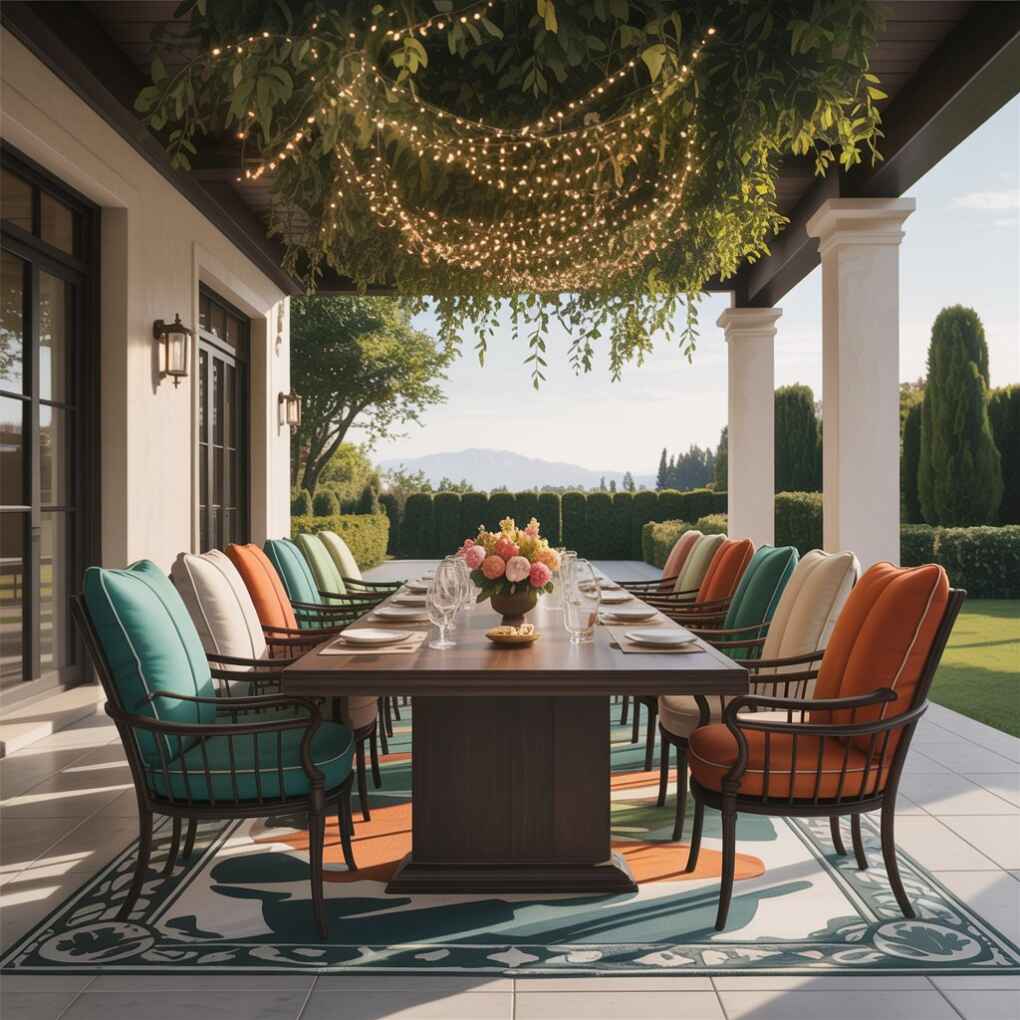
In today’s fast-paced world, the dining room has evolved beyond its utilitarian roots—it’s now a multi-functional hub for WFH video calls, creative projects, and intimate gatherings. Yet with renovation budgets tightening (the average American spends just $1,200 on dining room updates), homeowners need high-impact, low-cost solutions that deliver maximum personality without breaking the bank. Through this guide, you’ll discover proven techniques that create instant visual interest while reflecting your unique story. Let’s turn those blank canvases into soulful expressions of who you are.
1. Moody Paint as Unexpected Wall Art
Who says paint can’t be your star decor element? Deep jewel tones like emerald green or navy blue create instant drama that elevates even the simplest dining sets. In my client consultations, I’ve watched anxious homeowners relax within minutes when their “boring beige box” transforms into an intimate sanctuary with just one can of paint.
Moody hues absorb light differently than neutrals, creating a cocoon-like effect perfect for dinner parties. I recommend testing samples at different times of day—what looks sophisticated at 8 PM might feel cave-like at noon. Pair with metallic fixtures to prevent the space from feeling too heavy.
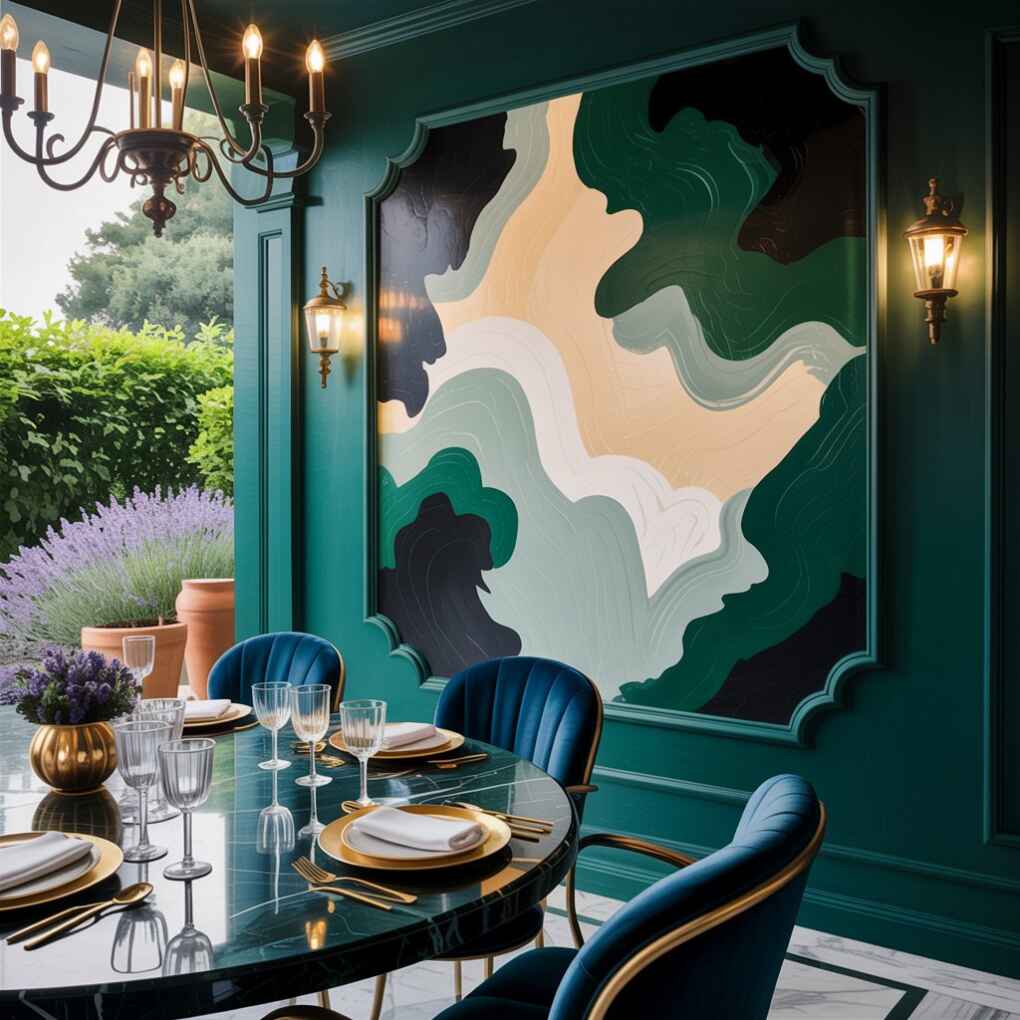
Pro Tip: Use a satin finish for dining rooms—it wipes clean easier than matte but won’t show every imperfection like high-gloss. For small spaces, paint just one focal wall to avoid overwhelming the room.
2. Curated Gallery Wall with Personal History
A thoughtfully arranged gallery wall tells your family’s story through collected artifacts. Start with three anchor pieces (like a large painting flanked by matching sconces), then build outward with photos, children’s artwork, and travel souvenirs. I advise clients to lay pieces on the floor first using painter’s tape on the wall as a guide—this prevents “hole regret.”

Gallery walls work especially well in dining rooms because they’re viewed during lingering meals. Mix frame styles but maintain consistent matting for cohesion. For renters or frequent redecorators, use tension rods with clips to display art without wall damage—an idea I borrowed from a client’s teen daughter that’s now my go-to rental solution.
3. Oversized Statement Mirror to Expand Space
In tight dining areas, a single large mirror (think 36″x48″ minimum) creates instant depth while reflecting candlelight beautifully. I avoid the classic “centered over buffet” placement—instead, I tilt mirrors slightly downward to capture both the table and people seated, making the room feel alive.
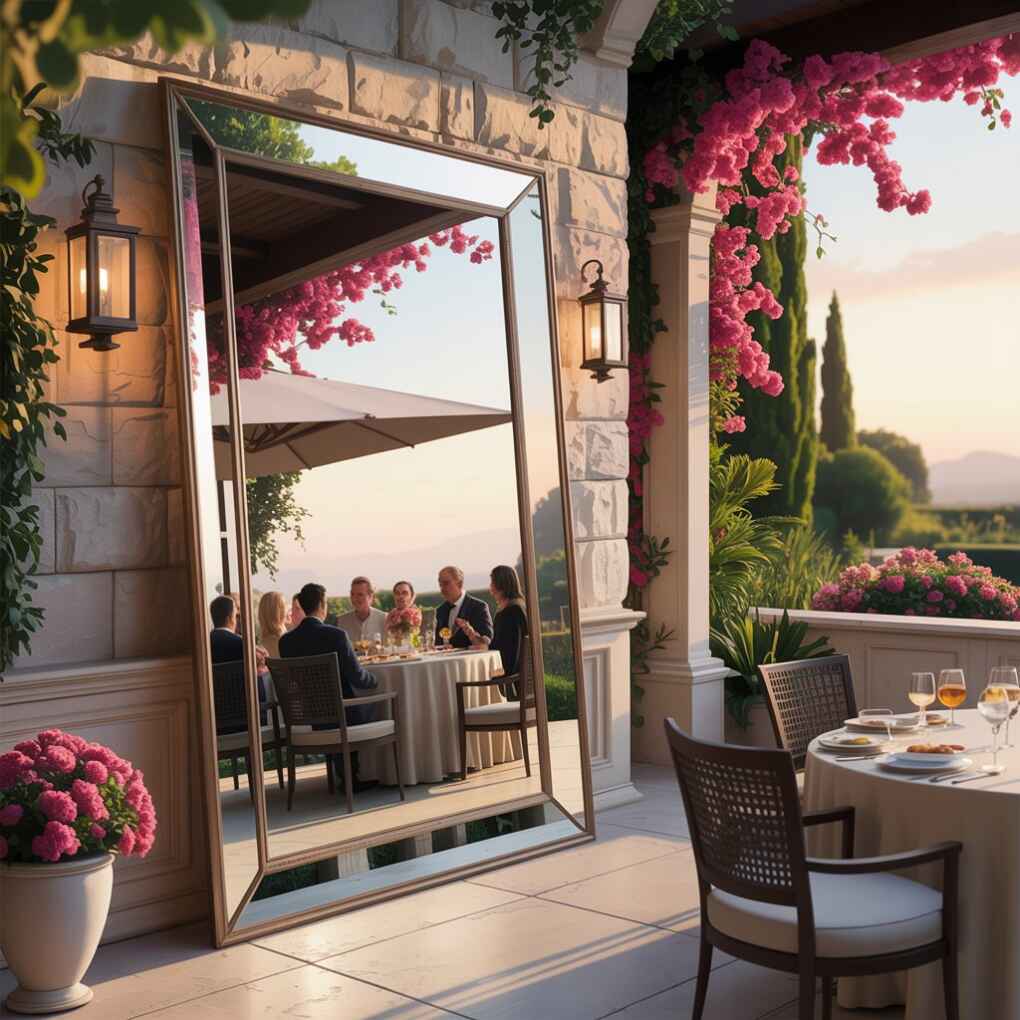
For character, hunt thrift stores for ornate antique mirrors with distressing—you’ll pay 20% of new retail prices. If your dining room has high ceilings, mount the mirror vertically to draw eyes upward. Safety note: Always use two-wall anchors regardless of mirror weight (TheSpruce.com).
4. Textured Wallpaper in Subtle Patterns
Gone are the days of fussy florals! Modern dining rooms shine with textured wallpapers like grasscloth or geometric linens in neutral palettes. I recently transformed a 10×12 dining room by papering just the chair rail section—a $300 project that looked like $3,000.
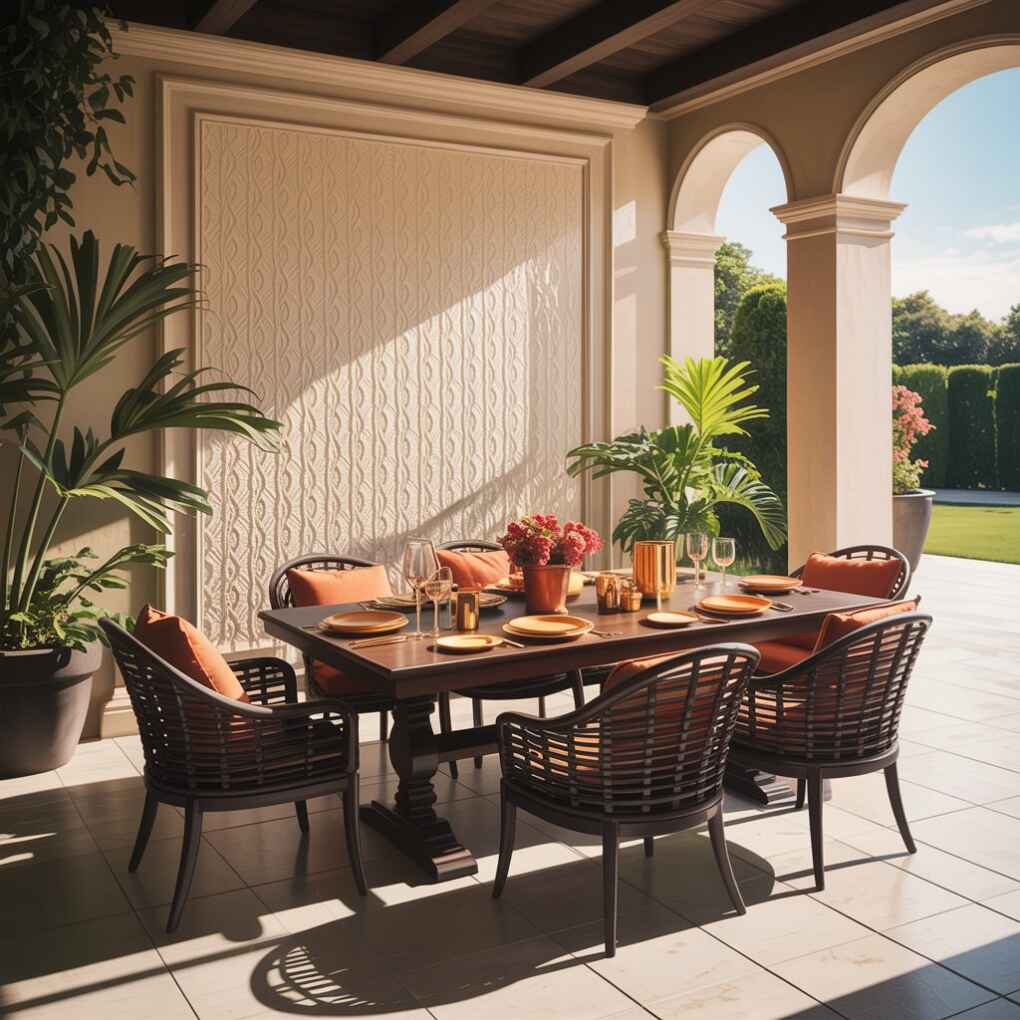
Peel-and-stick options now match professional-grade vinyls in durability. Sample three small swatches: apply at eye level, then observe how pattern scales change when viewed from seated positions. For traditional homes, try classic stripes painted directly on walls—it’s surprisingly affordable when using two coordinating paint swatches.
5. Floating Shelves Styled with Purpose
Skip the crowded buffet and install floating shelves for curated display. I recommend staggering heights (one low near seating, one higher) to create rhythm. On the lower shelves, display everyday items like wine glasses you actually use; higher shelves showcase special collections.
Shelf Styling Formula My Clients Swear By:
- 1 vertical stack of books (face-out with similar spines)
- 1 sculptural object (ceramic vase or woven bowl)
- 1 living element (small trailing plant in hidden pot)
- 1 personal item (framed recipe card from grandma)
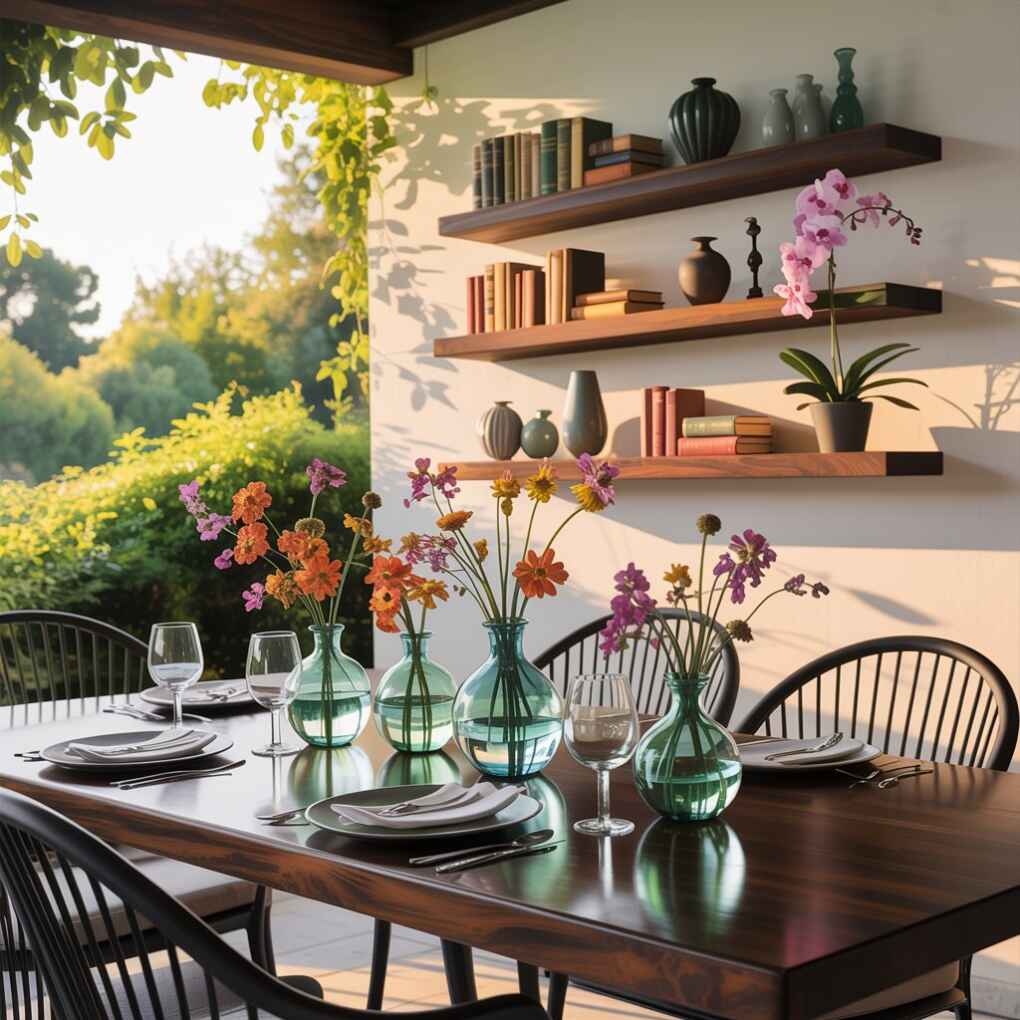
Avoid overcrowding—empty space lets objects breathe. For dining rooms under 150 sq ft, limit to two shelves maximum.
6. Bold Accent Wall with Architectural Detail
Wood paneling makes a stunning return in dining rooms through modern interpretations like recessed paneled walls or floating 3D tiles. When a client insisted their 8’x10′ dining room felt “like a closet,” we installed board and batten halfway up the wall—creating definition without visual weight (TheSpruce.com).
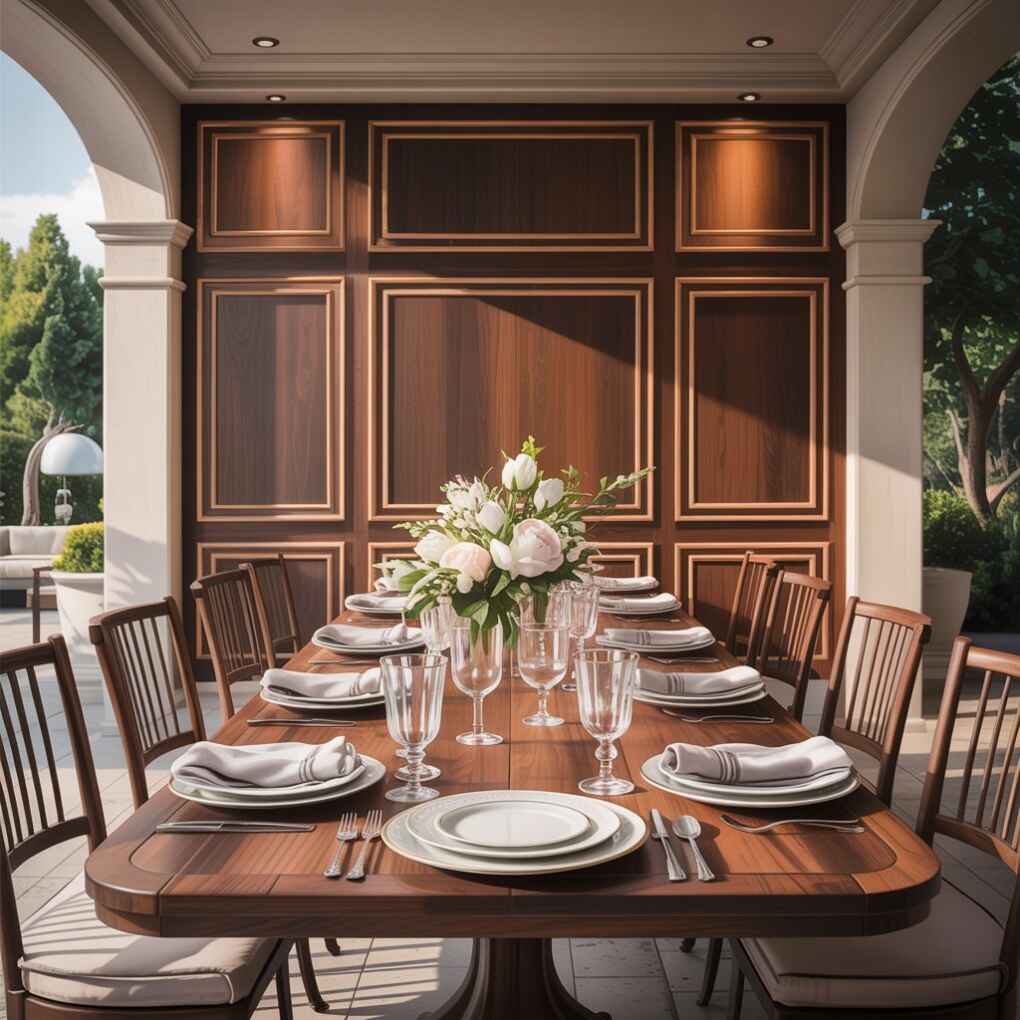
For DIYers: Rent a pneumatic nailer ($25/day) to install shiplap faster. Paint trim two shades darker than wall color to make the detail pop. In Victorian homes, I frequently revive original wainscoting by replacing damaged sections with reproduction panels—historical societies often have pattern libraries.
7. Lighting as Functional Wall Sculpture
Ditch basic pendants and treat lighting as art. A sculptural sconce arrangement down one wall creates gallery-like interest at eye level during meals. My favorite solution for narrow rooms: wall-mounted swing-arm lamps that pivot over the table when needed but tuck flat against walls otherwise.
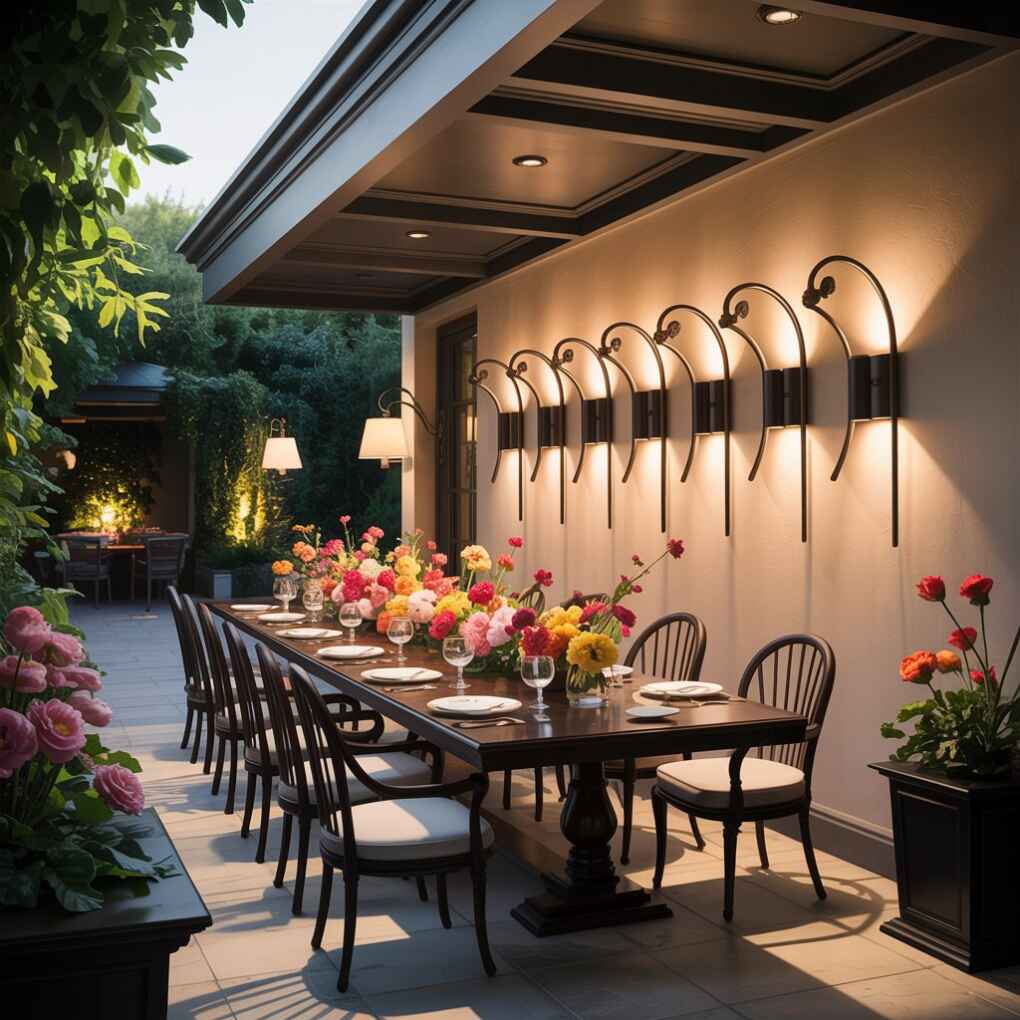
Pro Tip: Install dimmers on all dining room lights—50% brightness creates the ideal ambiance for both casual dinners and celebrations. For historic homes, search “vintage reproduction lighting” to find period-appropriate fixtures with modern wiring.
8. Textile Wall Hangings for Warmth
Woven tapestries or stitched fabric panels add softness that balances hard dining surfaces. I recently helped a client repurpose her grandmother’s quilts as wall art—she sandwiched sections between plexiglass frames for a modern textile collage.

This works especially well in rooms with abundant hard surfaces (glass tables, metal chairs). Choose natural fibers like wool or linen that absorb sound—critical for dining areas where echo ruins conversation. For pet-friendly homes, mount textiles 8+ inches above chair backs to prevent accidental snags.
9. Large-Scale Single Artwork for Impact
Resist the temptation to fill every inch! One massive painting (aim for 60-75% of wall width) creates breathing room that makes meals feel less claustrophobic. When space is tight, I source local art students—their large canvases often cost under $200 and support community talent.
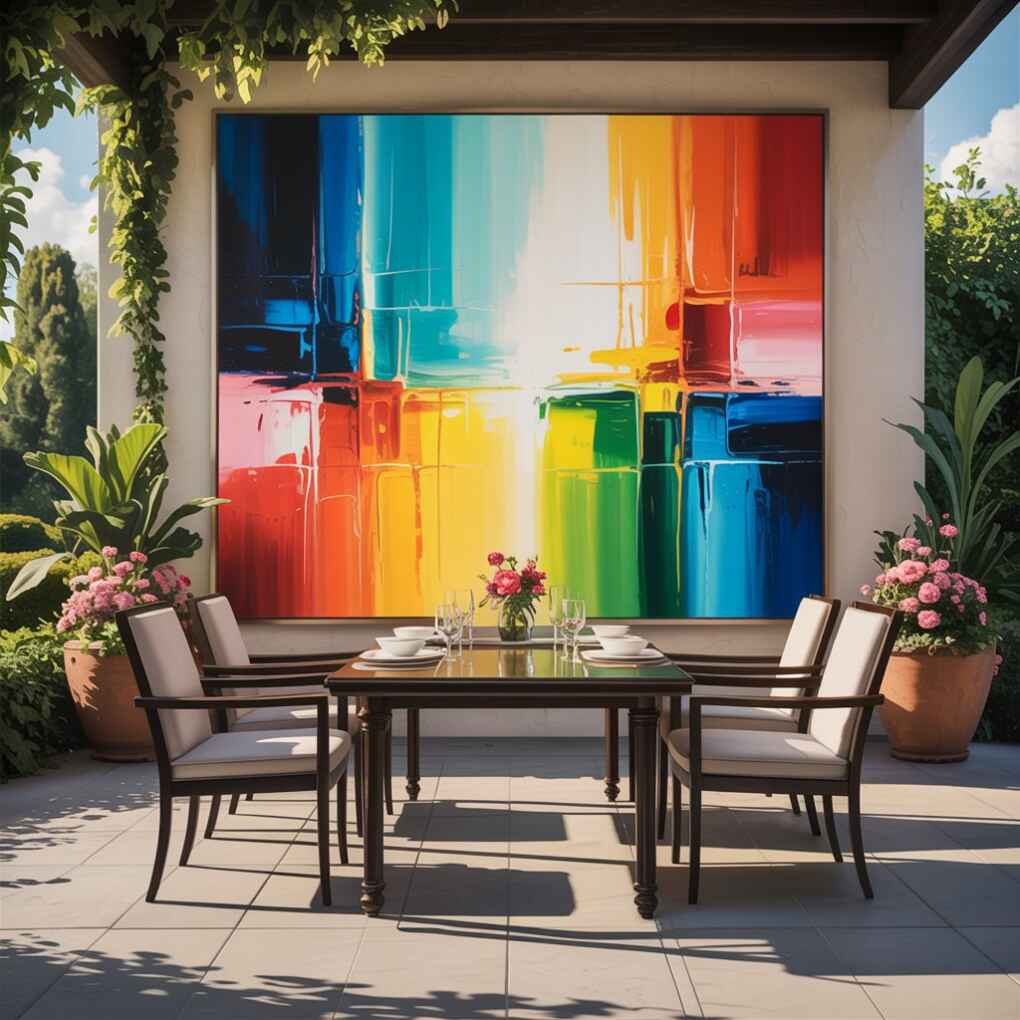
Position art so its center hangs at 57″ height (average eye level seated). For dining tables, keep artwork 6-10 inches above the table edge—any closer feels oppressive. In contemporary spaces, try black-and-white photography to let colorful food and tablescapes shine.
10. Botanical Murals for Organic Energy
Forget dated fruit bowl prints—today’s best dining rooms feature subtle nature murals that bring the outside in. I partner with muralists to create custom “seasonal vine” patterns that change color with the year (spring blossoms → autumn berries).
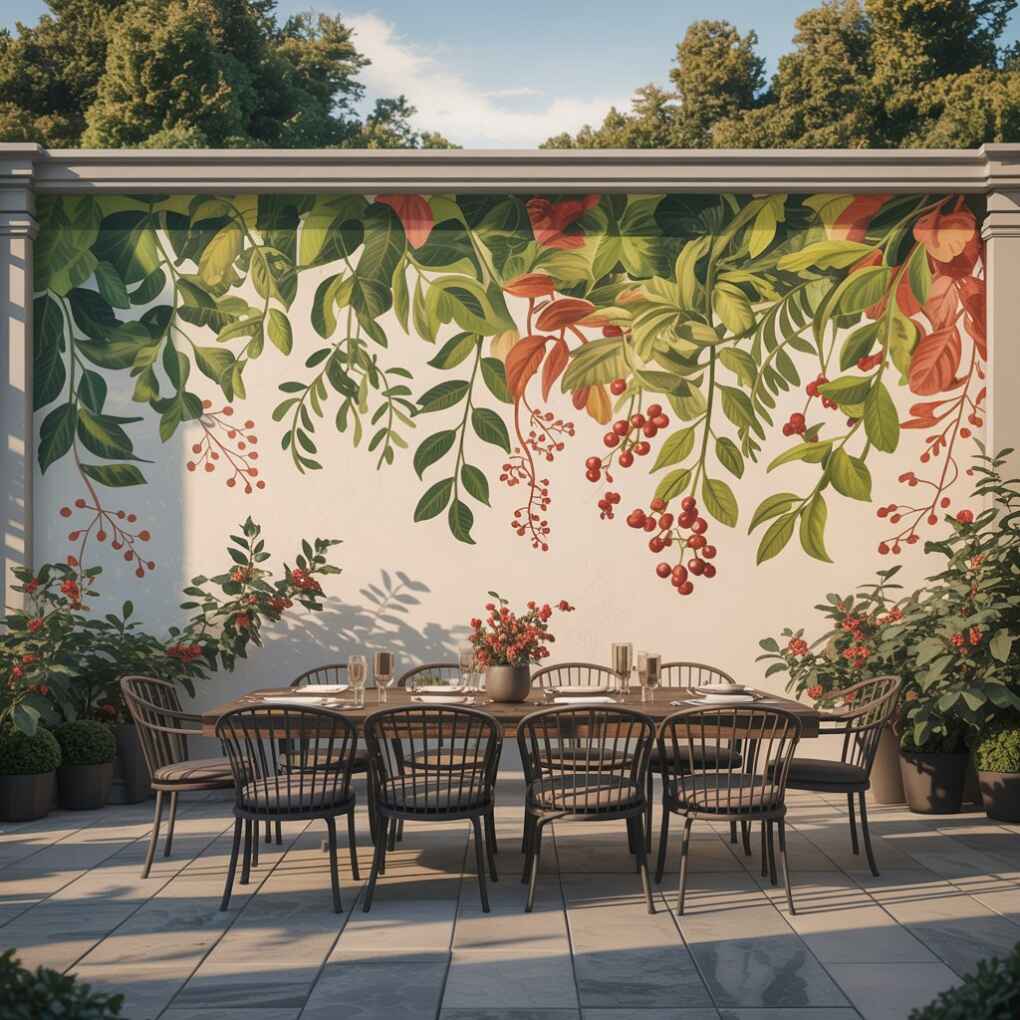
For renters: Removable wall decals like Chasing Paper‘s botanical designs peel off cleanly. Start with a single wall behind the head of the table—this provides visual “anchor” without overwhelming. Bonus: Plants in art form improve mood without requiring watering!
11. Symmetrical Sconce Arrangement for Formal Flair
Flanking a dining table with matching wall sconces creates instant elegance reminiscent of grand estates. My clients love the drama of wall-mounted candle-style fixtures (LED for safety) that mimic candlelight’s flattering glow during meals.
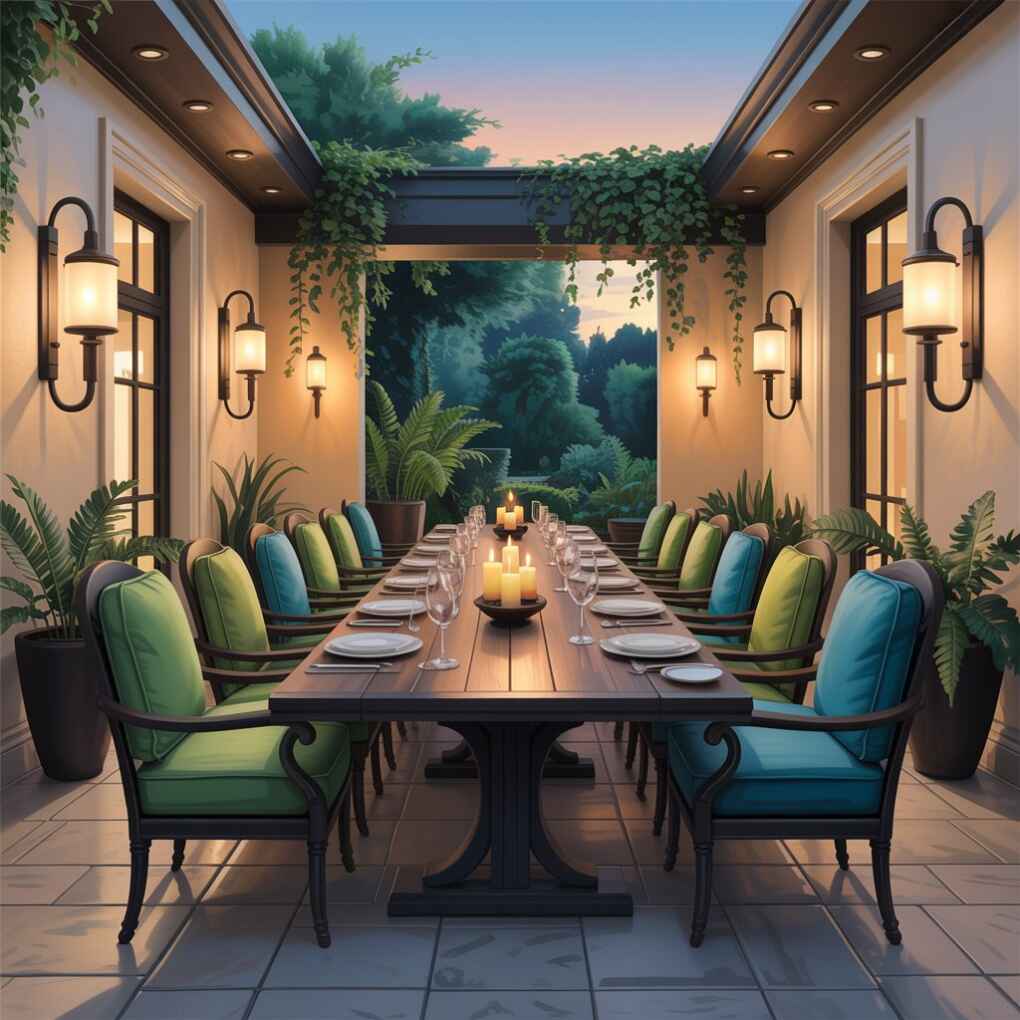
Pro Tip: Position sconces 60-66″ above the floor with shades pointing slightly downward. In rooms with chair backs over 36″, mount sconces higher to prevent head bumps. For modern spaces, try geometric black metal fixtures against white walls for high contrast.
12. Chalkboard Wall for Interactive Fun
In homes with kids or frequent game nights, a chalkboard wall section near the dining table builds engagement. I frame the chalk area with painted wood molding to define it as intentional decor—not an afterthought. Family menus, doodles, and dinner party rules become part of your wall’s story.

Use Porch` chalkboard paint (smoother than competitors) and seal with matte polyurethane. For adults-only spaces, try a wine journal chalkboard where guests sign bottles they’ve shared—becomes a living timeline of celebrations.
13. Custom Plate Rail for Heirloom Display
Plate rails (those horizontal ledges near the ceiling) let you showcase wedding china without sacrificing cabinet space. I love how they create rhythm along long dining room walls while keeping surfaces clutter-free.
Plate Rail Styling Rules:
- Alternate display heights (some plates flush, some tilted)
- Mix patterns but stick to two dominant colors
- Leave 2″ spacing between items for breathing room
- Add non-plate elements like small framed photos
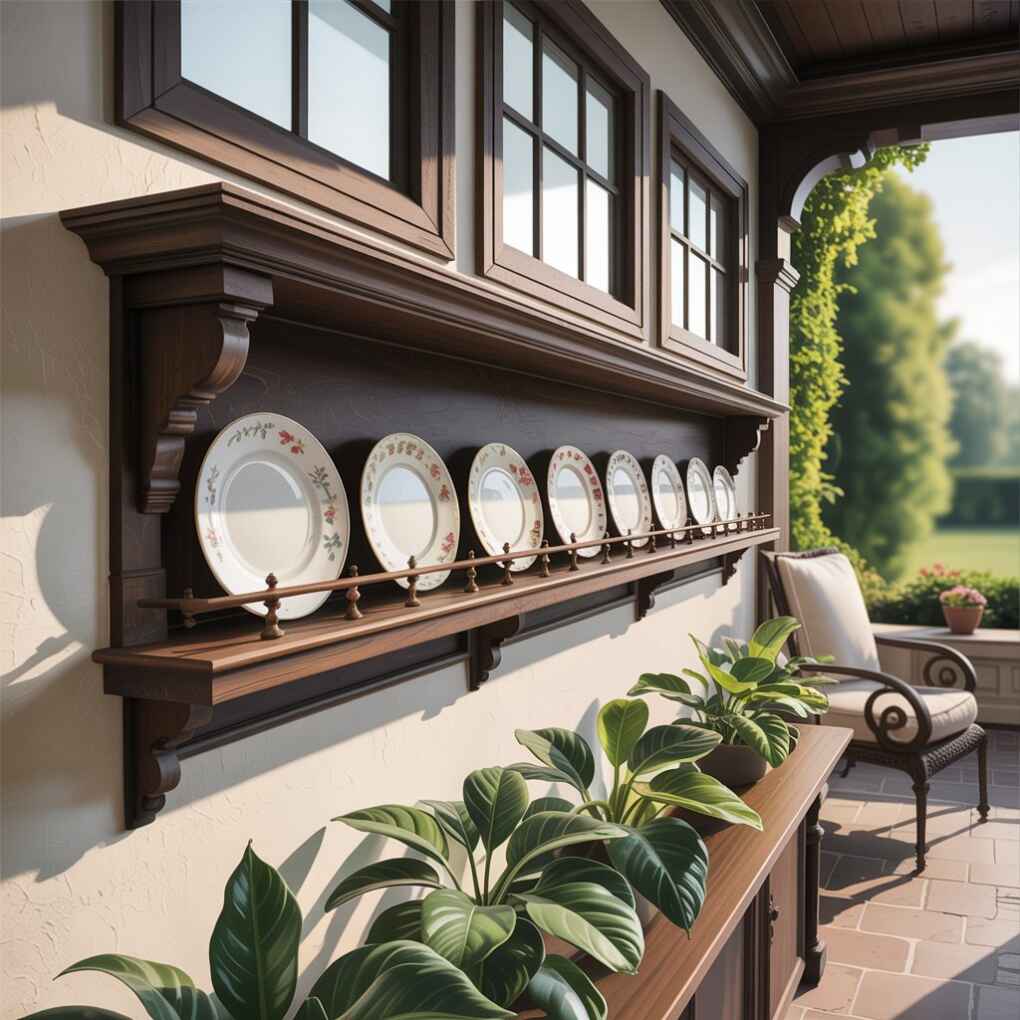
For vintage charm, hunt estate sales for brass rails—early 1900s originals often cost less than new reproductions.
14. Floating Display Niche for Jewelry-Worthy Objects
Recessed wall niches turn ordinary walls into luxury destinations. In a recent NYC apartment, we created a shadowbox niche using drywall channels to display a client’s crystal collection—making her modest dining area feel boutique-hotel worthy.
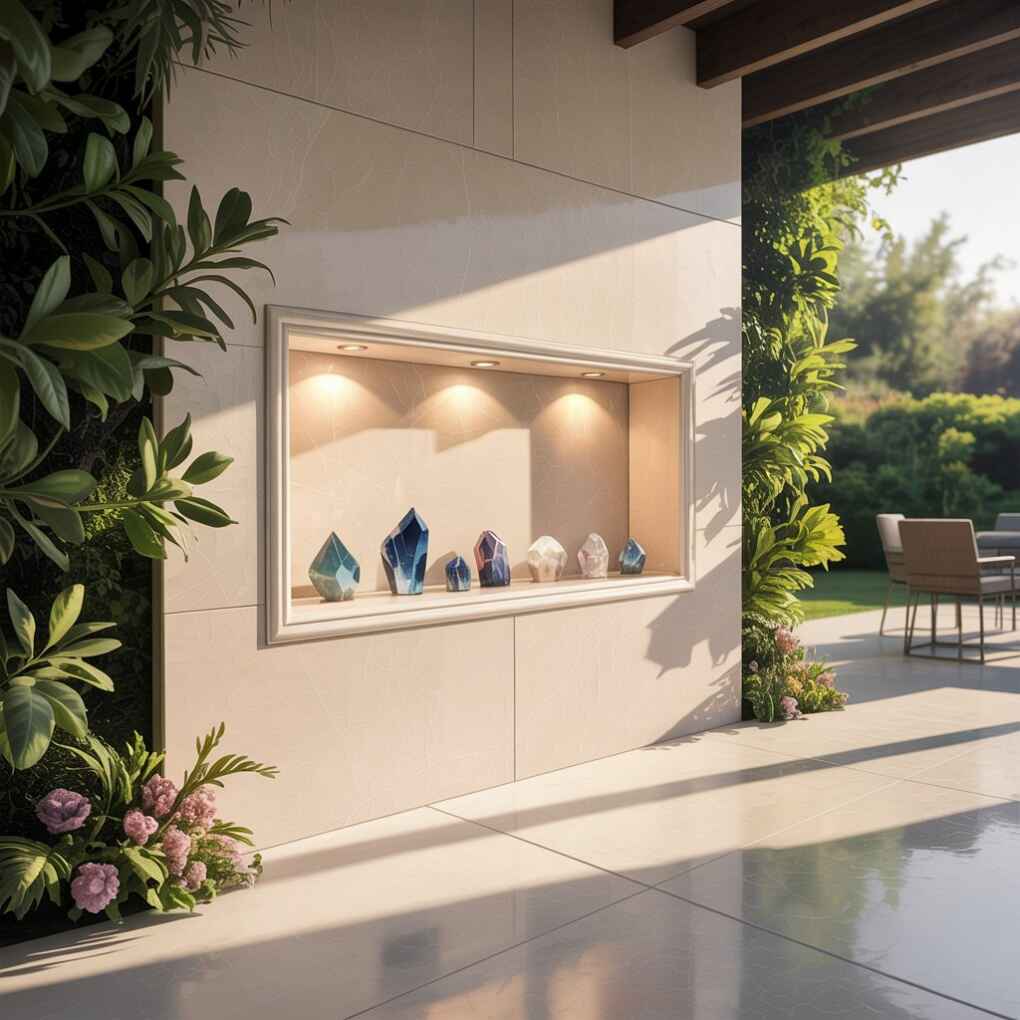
DIY alternative: Mount a deep picture frame (2″ depth) to the wall, line with velvet, and display special objects. Position niches at seated eye level (42″) for maximum impact during meals. Single-niche installations cost under $150 in materials.
15. Monochromatic Photo Wall with Emotional Resonance
Forget mismatched frames—curate a powerful narrative with your own photos in one cohesive tone. For a client grieving her mother, we printed 20 years of family dinners in sepia on matte paper, creating a “memory wall” that transformed meals into celebrations of legacy.
“The dining room became sacred space where her children now ask about Grandma’s favorite recipes,” she shared. “That wall didn’t just decorate—it healed.”
Photo Wall Checklist:
- Print all images same size (8×10 works best)
- Use textured matte paper to reduce glare
- Group by theme (birthdays, holidays, vacations)
- Leave 1.5″ between frames for clean lines
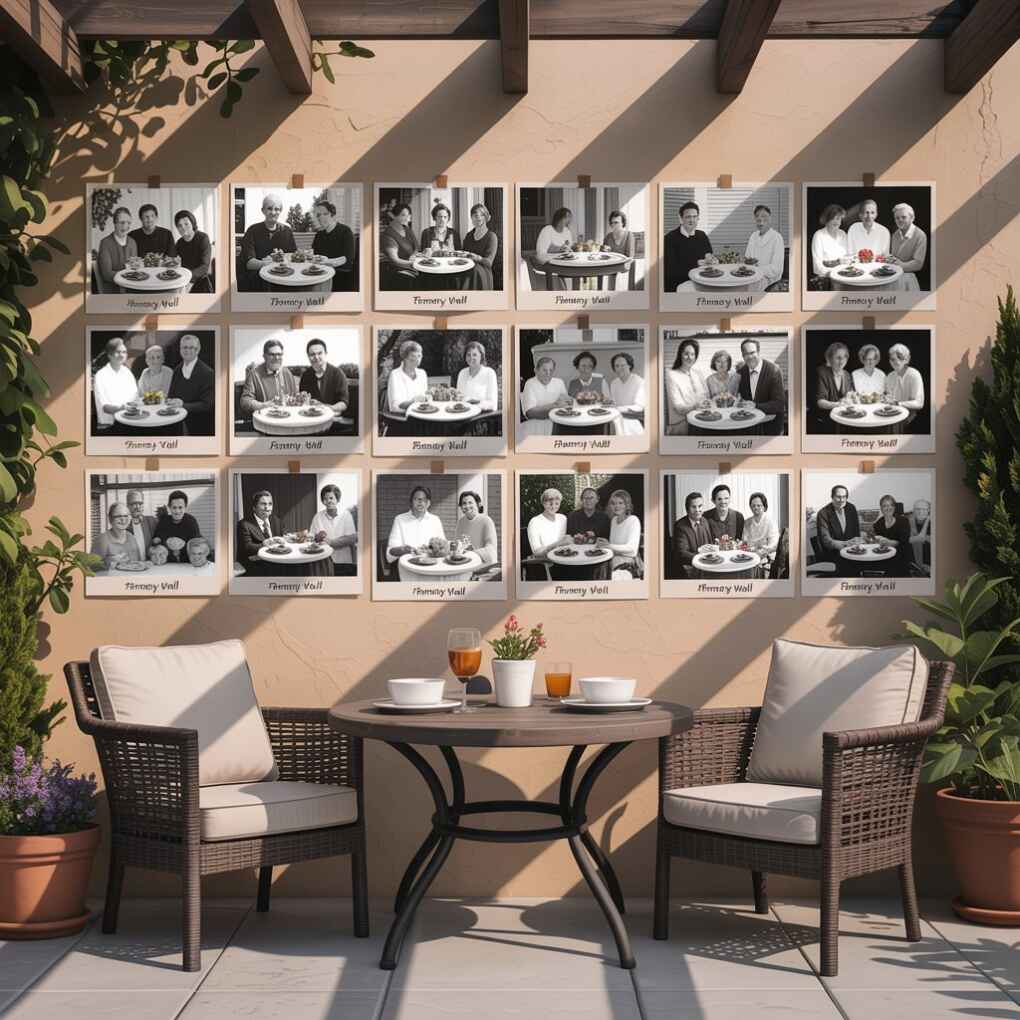
Bringing It All Together
Your dining room walls hold untapped potential to become the soul of your home—not just backdrop to meals. As interior designer Ursula Carmona wisely notes, “Your dining room is more than just a place to eat—it’s a space to gather, celebrate, and make memories” (homemadebycarmona.com). The best transformations balance aesthetics with emotional resonance, turning every dinner into an experience.
Remember Carla Aston’s practical wisdom when space is tight: “I do like to do some kind of console or buffet piece in a dining room… However, I also understand when dining rooms don’t have that kind of space” (carlaaston.com). Solutions exist for every footprint—sometimes the most powerful decor happens right on your walls.
However you choose to express yourself, prioritize authenticity over trends. That gallery wall of your child’s evolving artwork? Worth more than any store-bought print. Those handwritten menus from family trips? More meaningful than mass-produced quotes. Your dining room should whisper, “This is us,” every time someone pulls up a chair. Start small—one statement mirror, one curated shelf—but start today. Because the most beautiful dining rooms aren’t defined by square footage, but by the memories made against their walls.
